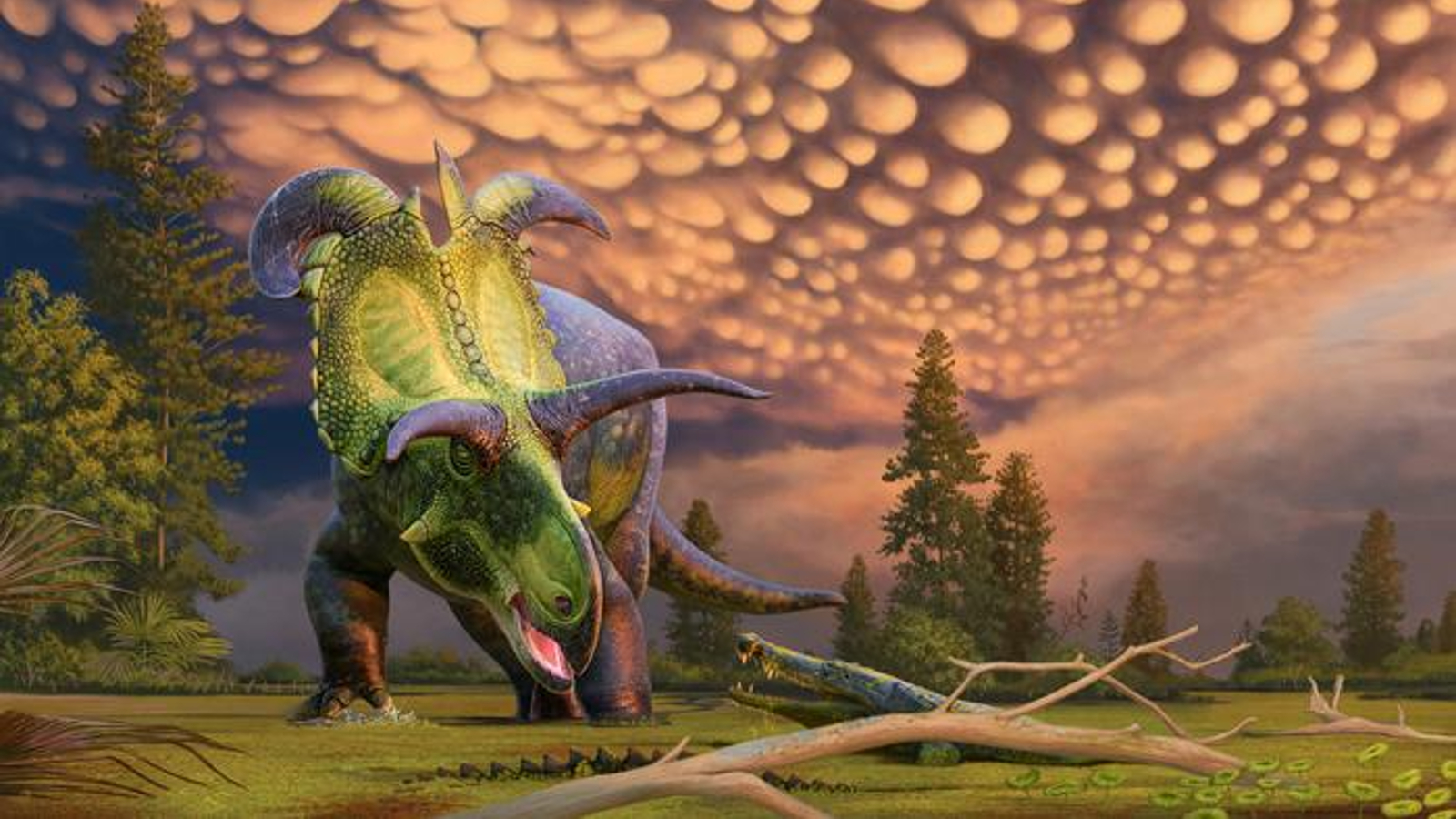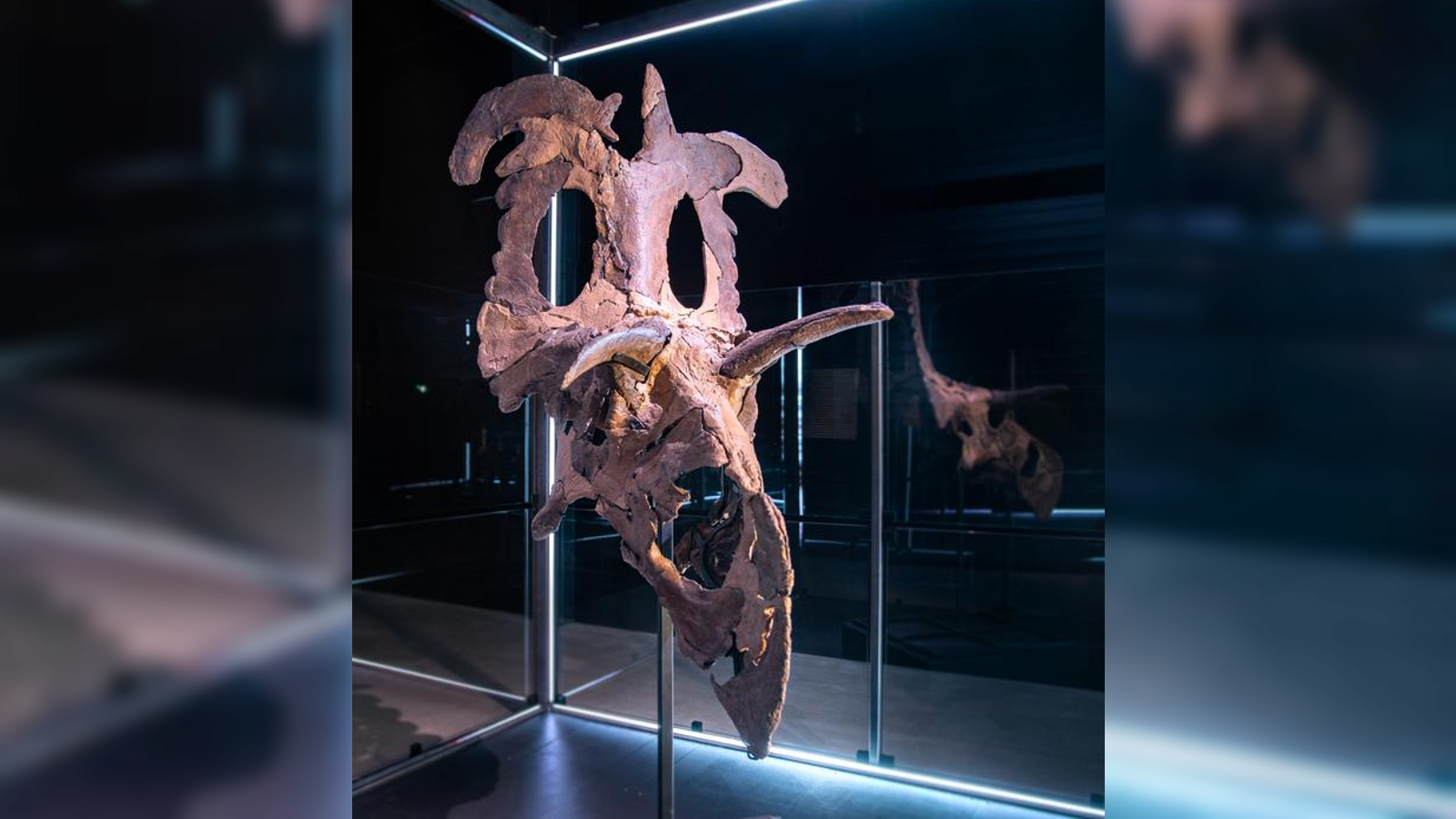
Paleontologists have named a newly unearthed dinosaur after the Norse god Loki due to a striking similarity between its horns and the deity's regal headpiece, as it was depicted in recent superhero films and television shows.
Scientists described the new dino, Lokiceratops rangiformis, in a study published Thursday (June 20) in the journal PeerJ. The researchers identified the species based on the partial remains of a skull unearthed in 2019 at the Judith River Formation in Montana's Badlands, around 2 miles (3.2 kilometers) from the U.S.-Canada border.
The species belongs to the clade Ceratopsia — a group of herbivorous horned dinosaurs, including Triceratops, that is renowned for its members' large bony head plates, or frills, and long, pointed horns.
However, L. rangiformis, which was likely around 22 feet (6.7 meters) long and weighed 5.5 tons (5 metric tons), "pushes the envelope on bizarre ceratopsian headgear" to extremes never seen before, study co-lead author Joseph Sertich, a paleontologist at Colorado State University, said in a statement.
L. rangiformis had a massive frill that was adorned with a pair of flattened, curvy horns at the top, in addition to the standard lance-like horns protruding from above its eyes. The frill horns are the largest ever seen in any ceratopsian. The unique headgear inspired the scientists to name the dinosaur's genus Lokiceratops in honor of the Norse trickster god Loki, who is often depicted wearing a helmet with similarly ornate horns — especially in modern comic-book portrayals by Marvel.
The newfound species also had a third pair of asymmetrical horns at the top of its frill, which earned it the species name rangiformis, meaning "looks like caribou" in Latin, because caribous (Rangifer tarandus) also have antlers that are longer on one side of their head than the other.
The dinosaur's skull also notably lacks a nose horn, a feature most other ceratopsians possess, including Triceratops.
Related: What was the typical life span of a dinosaur?

L. rangiformis lived around 78 million years ago during the Cretaceous period, about 12 million years before Triceratops emerged. Back then, what is now North America was a large island continent, known as Laramidia. The newly identified species likely dwelled in swamps and floodplains along this ancient land's east coast.
Researchers had previously assumed that only a couple of horned dinosaur species were likely to co-exist on Laramidia at any one time, because later species in this group likely dominated the competition for resources.
But L. rangiformis is now the fourth ceratopsian — and fifth horned dinosaur — that has been found dating from the same period in Laramidia's history, hinting that there was more diversity among this group than expected, researchers wrote. Two of these other dinosaurs were also unearthed from the Judith River formation, suggesting they co-existed in relative harmony.

However, "the skull of Lokiceratops is dramatically different from the other four animals it lived alongside," study co-lead author Mark Loewen, a paleontologist at the University of Utah, said in the statement. The high levels of ceratopsian biodiversity, which led to increased competition for resources at the time, likely resulted in sexual selection that favored these giant horns, he added.
In addition to providing protection from predators, scientists believe the frills and horns of ceratopsians were primarily used to attract potential mates, similar to the elaborate colored feathers of birds. The size of L. rangiformis' horns was likely a marker of how successful each individual was. In this case, bigger really was better.







